The Long Long Tail Is Here — and It’s Changing Everything
Topic: Strategy
Published:
Written by: Bernard Huang
The biggest shift in search isn’t technical. It’s cognitive.
For twenty years, we’ve been typing questions into a box. Now, we’re having conversations. That subtle change — from inputting to interacting — has rewritten how people find, process, and trust information online. Search is no longer about retrieval; it’s about reasoning. And that evolution demands an entirely new way to think about discoverability.
For years, SEOs learned to master the “long tail:" those low-volume, specific keywords that quietly drove most of the web’s organic traffic. But AI search doesn’t think in keywords. It thinks in connections. It interprets context, synthesizes meaning, and pulls together information across countless sources to form what feels like an answer. To show up in that answer, you need more than a page that matches a query. You need a pattern of understanding.
That’s the idea behind what I call the long long tail.
From Long Tail to Long Long Tail: What’s the Difference?
When Chris Anderson introduced The Long Tail in 2004, it explained how niche demand reshapes markets.
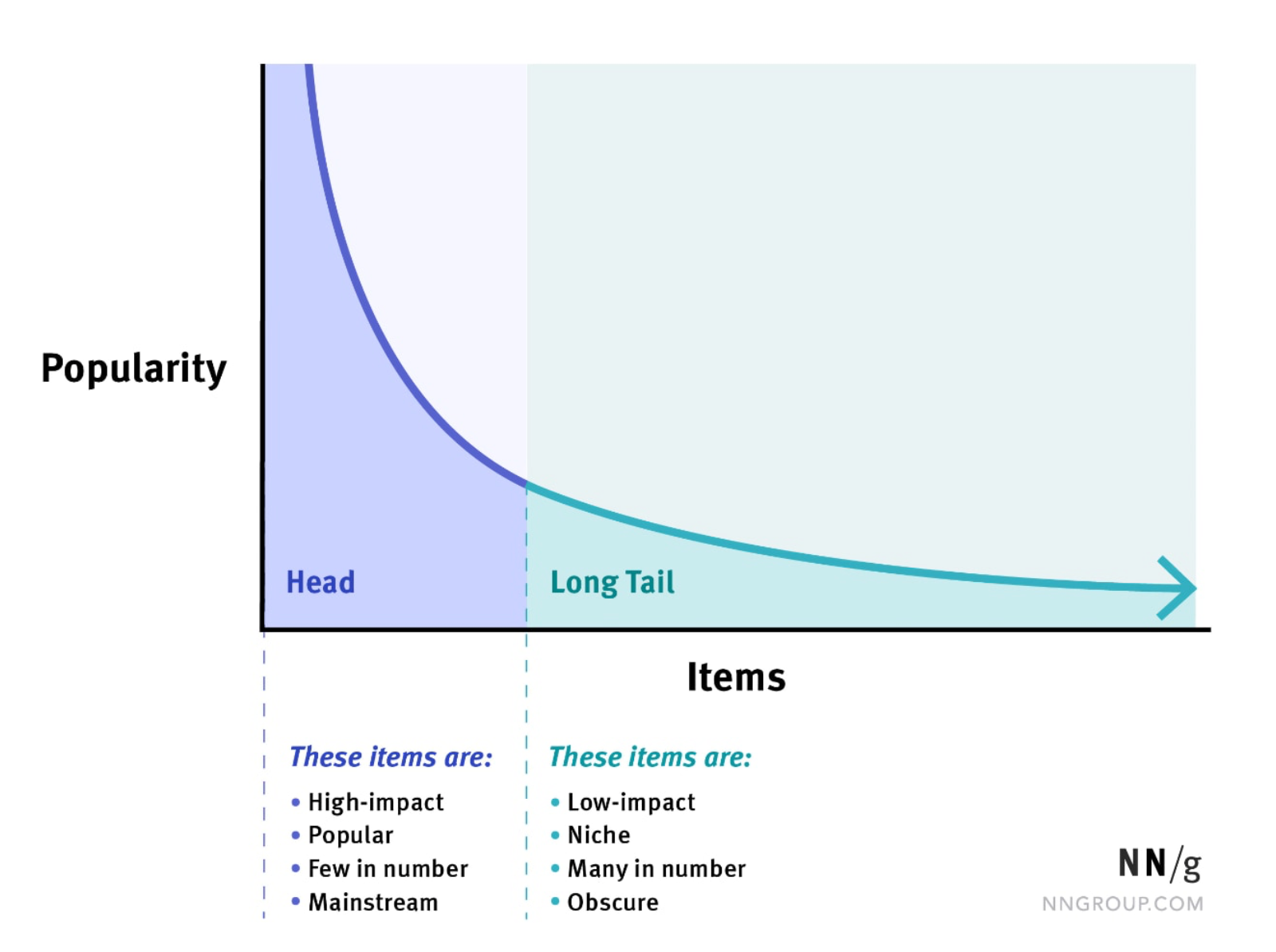
In SEO, it meant optimizing for thousands of low-volume, low-competition phrases instead of fighting for a handful of obvious ones. It worked brilliantly — for a while. You could create a small library of pages targeting specific questions and watch traffic grow quietly and consistently.
But that strategy was built for a search world driven by retrieval. It assumed search engines looked for one-to-one matches: query in, result out. Even “long tail SEO” ultimately relied on a keyword-centric worldview. The game was about precision and coverage, not cognition.
AI has blown that up.
Large language models don’t look for exact matches. They interpret meaning across many dimensions, like language, sentiment, intent, authority, and recurrence. They decide who to “trust” not because you used the right phrase, but because your content shows up repeatedly across semantically related contexts.
The long long tail takes the logic of the original concept — serving the niches — and applies it to conversational discovery. Where the long tail was about being found, the long long tail is about being understood.
Why AI Search Changed the Rules
Search used to be a retrieval system. You entered a query, and the engine retrieved documents that matched it. Optimization was largely about findability: the right words in the right places with the right backlinks.
AI search, by contrast, is a conversational system. Models like ChatGPT and Google’s Gemini don’t return lists of results. They generate narratives, blending information from multiple trusted sources.
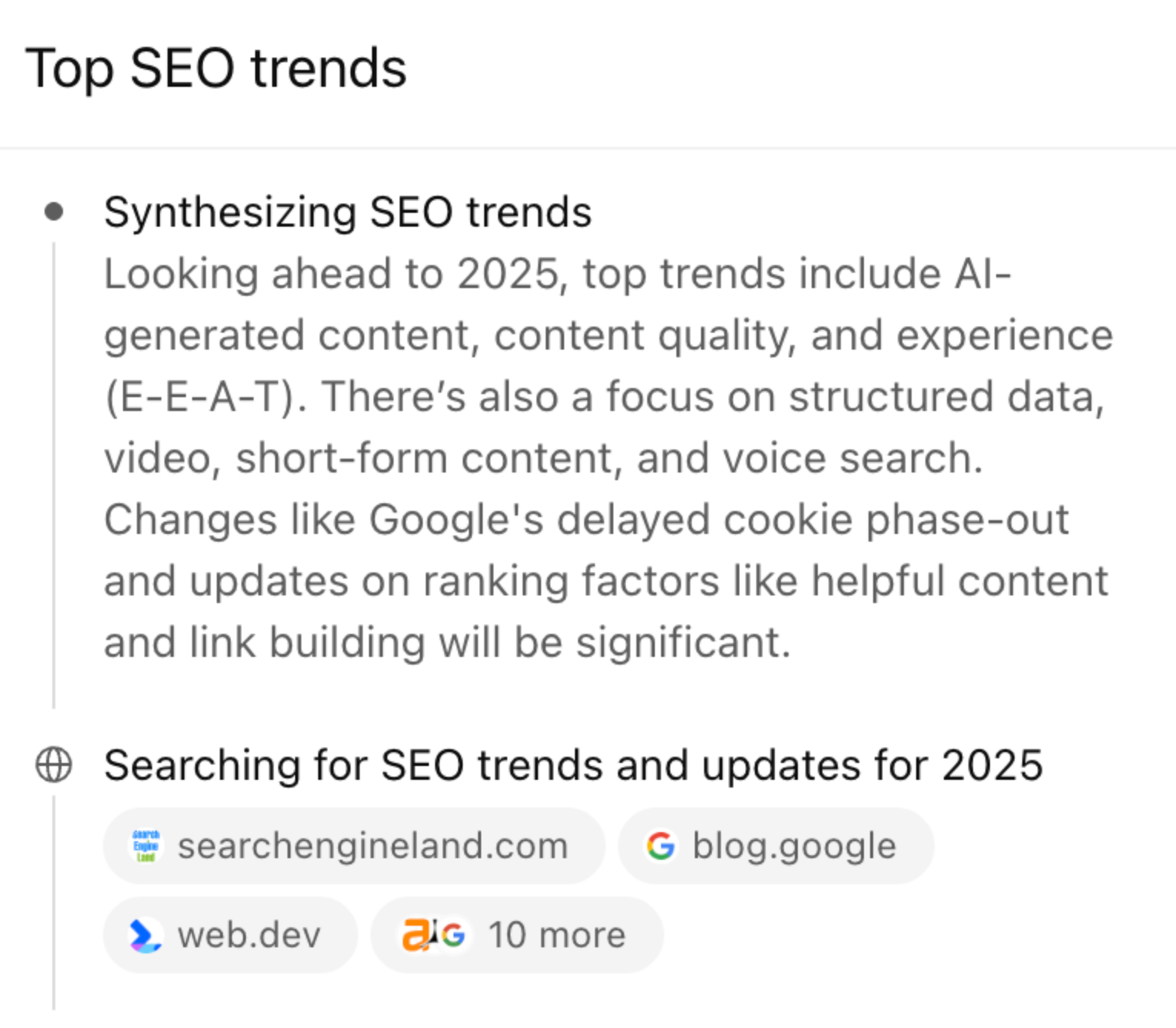
Their goal isn’t to show you pages. It’s to provide you with a coherent answer that feels both accurate and complete.
That’s a seismic change.
Because instead of optimizing for a single keyword or URL, brands now have to optimize for representation. Are you one of the voices an AI chooses to reference when building an answer? Are you part of the fabric of context that gives an engine confidence in what it says?
Being included depends on three things:
Topical coverage: Have you mapped your domain comprehensively?
Semantic relevance: Do your ideas connect meaningfully across related topics?
Recurrence: Do other trusted sources reinforce or reference your work?
The long long tail is built for this new environment. It focuses less on transactional search and more on conversational discovery — aka the network of high-context, low-volume questions that reveal how people think, not just what they type.
The Anatomy of Long Long Tail Content
Long long tail content isn’t just niche content. It’s content that feels alive inside a larger conversation. It’s strategically layered, semantically rich, and built to reflect how people reason through complex topics.
In traditional SEO, “depth” often meant adding more words. In the long long tail, depth means capturing the multi-dimensional nature of curiosity. A good piece doesn’t just answer “what." It explores “why,” “how,” and “what happens next.” It treats knowledge as an evolving story, not a static fact.
That level of depth builds semantic authority. It teaches AI models not only what you know, but how you think. And when your thinking consistently mirrors the questions people ask, you become a trusted node in the model’s understanding of a topic.
It’s Connected
One page doesn’t build expertise. Patterns do.
The long long tail thrives on interconnectedness: dozens of pieces that explore different angles of the same idea space. You might have a glossary term, a thought piece, a case study, and a framework all orbiting the same core concept. This repetition, viewed through multiple lenses, becomes a strong signal that you genuinely understand your domain.
When AI systems see your brand across this semantic network, they recognize consistency and reliability. That’s when you start getting referenced in answers, not just ranked on pages. In this new era, mentions are the new rankings.
It’s Predictive
AI search doesn’t stop at the first question, and neither do people. The next step in any conversation is a follow-up: “What about…?” “How does that compare to…?” “What happens if…?”
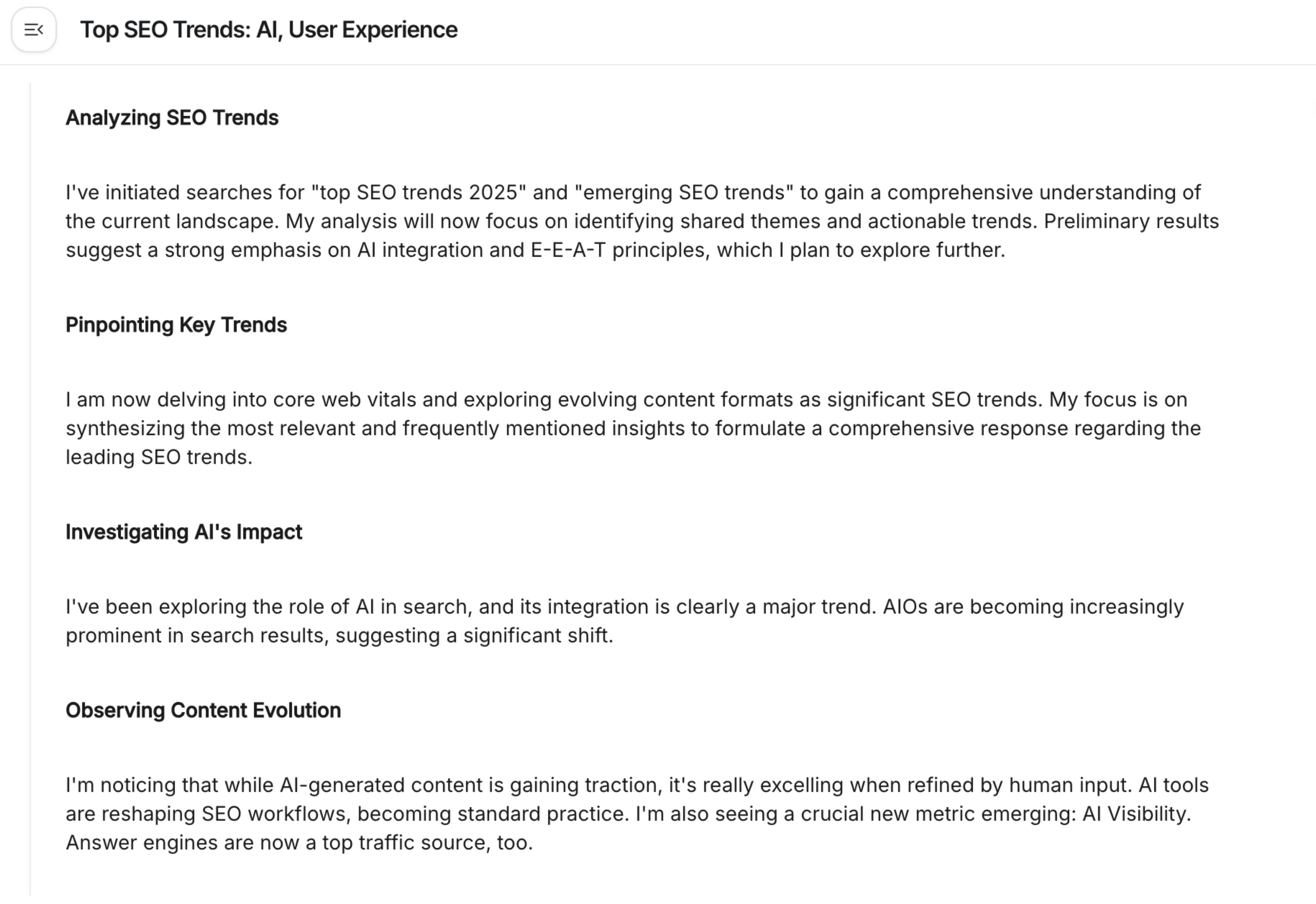
Long long tail strategies anticipate those moments. They map curiosity, not just intent. Each piece leads naturally to another, creating continuity across the user’s journey. When your content ecosystem reflects the way real people think and ask, it becomes part of the knowledge graph AI draws from instead of just a collection of one-off answers.
What It Looks Like in Practice
Imagine your brand operates in the fertility space.
A typical long-tail approach might start with a query like, “How much does it cost to freeze eggs in California?” That’s your baseline, a clear transactional question. But a long long tail approach doesn’t stop there. It builds out a contextual ecosystem.
You might publish a deeper explainer on “What factors influence egg freezing success rates after 35?” — a piece that adds age, risk, and probability into the equation. Then, you go further still: “Is egg freezing worth it if I’m not sure I want kids?” That one introduces emotional, ethical, and lifestyle dimensions that traditional SEO content often ignores.
Each piece feeds the others. Each one expands the context of the last. Together, they form a web of meaning that AI can recognize and users can trust. That’s what long long tail content looks like in the wild: high-context, low-volume, deeply human, and impossible to fake.
How to Build a Long Long Tail Strategy with Clearscope
Step 1: Identify your core idea space.
Start by mapping not just the topics you want to own, but the questions and relationships around them. Use Clearscope’s Topic Exploration to uncover how both people and search systems connect those ideas.

Step 2: Track the topics and understand the AI reasoning.
Before you create anything, you need to understand how AI systems currently interpret your domain. Use Clearscope to track the topics that matter, study how AI talks about them, and look for the gaps — the missing context, the shallow explanations, the follow-up questions that aren’t being answered. This gives you a clear picture of the “idea space” you need to fill and how models are reasoning about your niche.
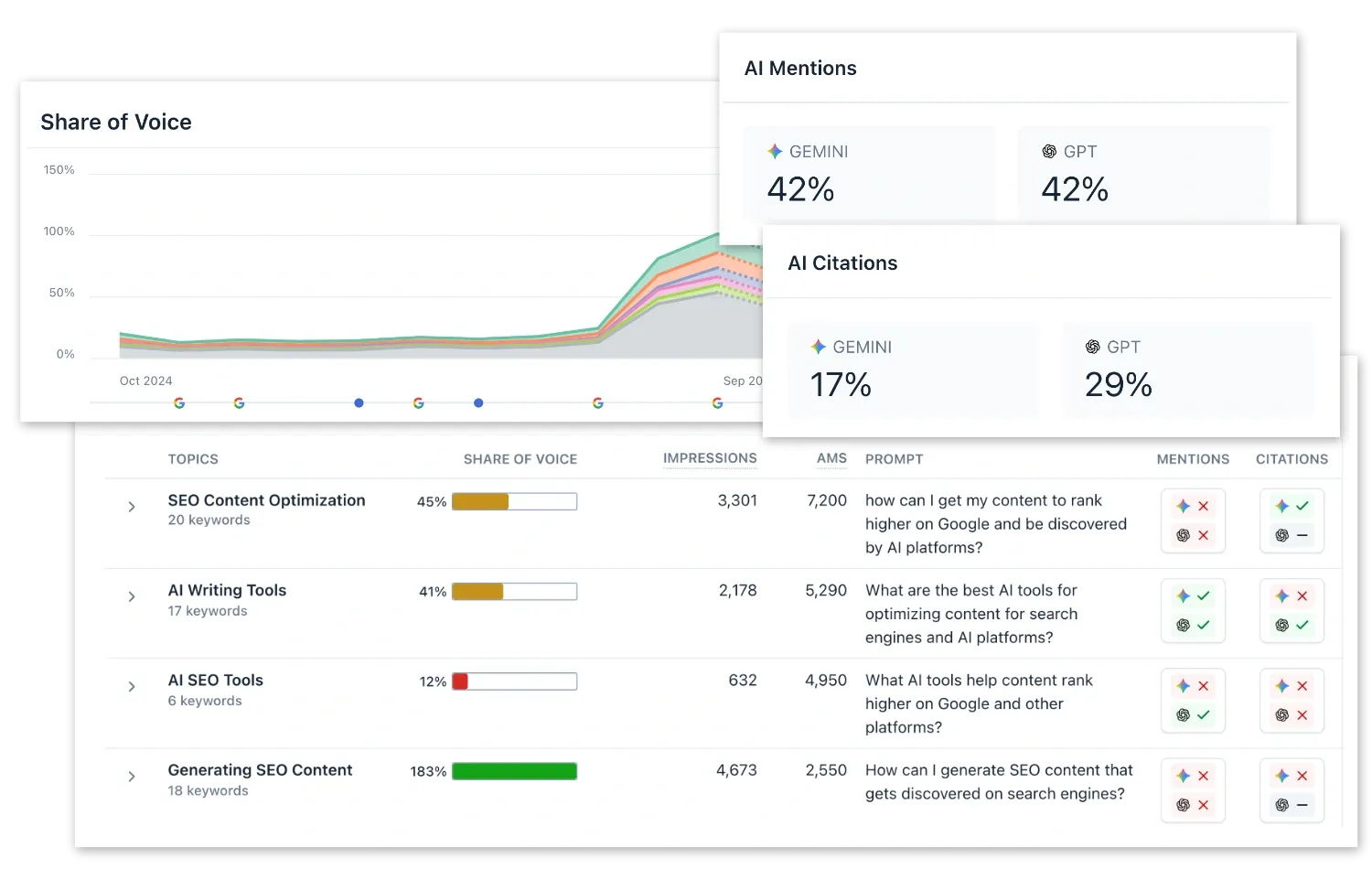
Step 3: Create the long long tail content to fill those gaps.
Once you understand the landscape, start building content that reflects it. Go wide enough to cover the breadth of user curiosity, and deep enough to demonstrate real expertise. Mix formats, like how-to guides, frameworks, opinion pieces, glossaries, interviews, and make sure each piece reinforces the others. The goal is to create semantic density over time: a connected ecosystem of high-context content designed for how AI discovers, synthesizes, and references information.
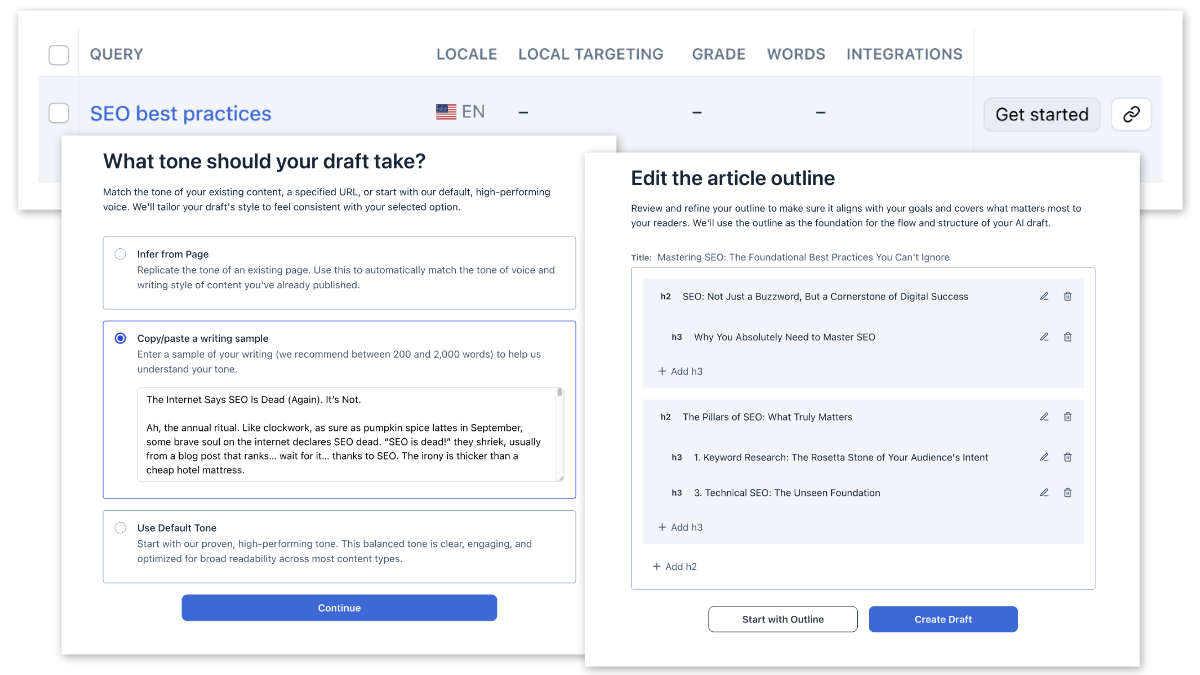
That’s how you measure influence in the era of conversational discovery.
A New Kind of Discoverability
The future of search isn’t about where you rank. It’s about whether you’re included.
AI doesn’t care who shouted the loudest. It cares who made the most sense, most consistently, across the most contexts. The brands that win in this new landscape won’t be the ones with the most backlinks or the most blog posts. They’ll be the ones whose ideas form the connective tissue of how knowledge itself is organized.
The long long tail rewards understanding over optimization. It’s not about producing more content. It’s about producing meaning and doing it in a way that machines and humans both recognize as valuable.
In this new era of search, trust isn’t earned once. It’s trained…Through the long long tail.

The Future of SEO Is Conversational
Search is now a conversation. Learn how to get cited by ChatGPT, Gemini & Perplexity—and why AEO is the new SEO.
Read moreWrite Blog Posts with AI (Without Losing Your Soul)
Turns out, you can write blog posts with AI without losing your unique voice. Discover smart ways to use AI as a writing assistant—not a replacement—for faster, higher-quality content creation.
Read moreWhat Is AEO? + Why It’s the Next Big Thing in Search
What is AEO? Learn how Answer Engine Optimization helps your content appear in AI-generated answers across Google, Bing, ChatGPT, and more.
Read more